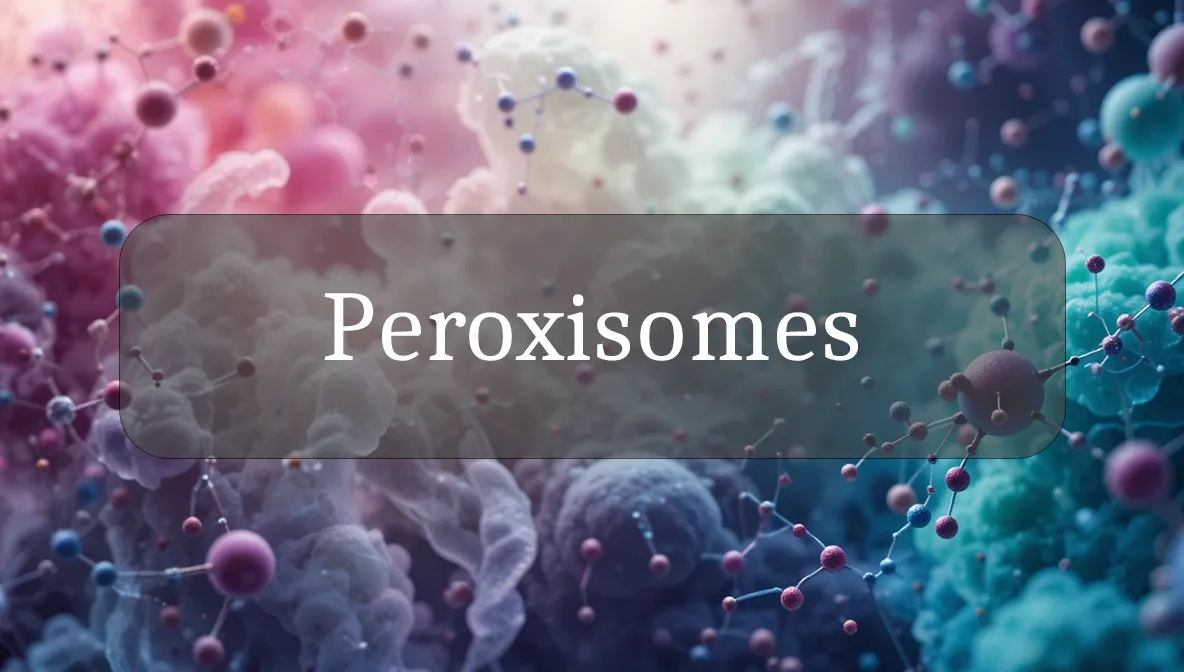Cells’ Detox Warriors for Energy and Health
Peroxisomes are like tiny detox squads in your cells, breaking down harmful substances and boosting energy to keep you vibrant and resilient. These small organelles work tirelessly to clear toxins and process fats, supporting your liver, brain, and overall wellness. Whether you’re aiming for clearer skin, sharper focus, or steady energy, understanding peroxisomes can inspire you to nurture your body’s natural cleansing system. Let’s dive into why these cellular superstars matter and how to keep them thriving for a thriving you.
Identity and Function
Peroxisomes are small, single-membrane-bound organelles found in nearly all your cells, especially abundant in the liver and kidneys. Think of them as cellular cleanup crews that use enzymes to break down toxic molecules and process fats. They’re named for their role in producing and neutralizing hydrogen peroxide (a harmful byproduct) during chemical reactions. Peroxisomes handle fat metabolism, detoxification, and antioxidant defense, ensuring your cells stay clean and energized.
Biological Role and Health Impact
Peroxisomes are vital for your body’s detox and energy balance, with powerful benefits:
- Detoxification: They neutralize harmful substances like alcohol, drugs, or environmental toxins, protecting cells from damage, especially in the liver.
- Fat Metabolism: Peroxisomes break down fatty acids to produce energy and building blocks for cell membranes and hormones, supporting brain health and metabolism.
- Antioxidant Defense: They manage hydrogen peroxide and other cell-damaging molecules, preventing oxidative stress that could harm tissues.
- Brain Function: By processing fats for myelin (nerve insulation), peroxisomes support clear thinking, memory, and mood stability.
- Immune Support: They help immune cells clear toxins and pathogens, boosting your body’s defenses.
Healthy peroxisomes keep your cells detoxed and fueled, promoting energy, resilience, and protection against diseases like liver disorders or neurological conditions.
Supporting Health
You can’t directly boost peroxisomes, but you can support the cells that rely on them:
- Eat a Nutrient-Rich Diet: Include healthy fats (e.g., avocados, nuts) and antioxidants (e.g., berries, spinach) to fuel fat metabolism and protect peroxisomes.
- Stay Hydrated: Drink 8–10 cups of water daily to aid liver detox and keep cells active, supporting peroxisomal function.
- Exercise Regularly: Moderate activity (e.g., 150 minutes of walking or yoga weekly) boosts fat metabolism and detox, keeping peroxisomes busy.
- Get Quality Sleep: 7–8 hours nightly allows cells to repair and detox, giving peroxisomes time to work efficiently.
- Manage Stress: Practice mindfulness or deep breathing (5–10 minutes daily) to reduce stress, which can increase oxidative stress and burden peroxisomes.
These habits create a cell-friendly environment, helping peroxisomes keep your detox and energy systems running smoothly.
Signs of Dysfunction
When peroxisomes malfunction, detox or fat metabolism can falter, showing signs like:
- Fatigue or Weakness: Poor fat breakdown can reduce energy production, leaving you tired or sluggish.
- Liver Issues: Yellowing skin (jaundice), bloating, or nausea may signal peroxisomal stress from toxin buildup in the liver.
- Brain Fog: Impaired fat metabolism for myelin can cause memory lapses, poor focus, or mood swings.
- Skin Problems: Dull skin or slow healing may result from toxin accumulation or poor lipid processing.
- Neurological Symptoms: Rare peroxisomal disorders (e.g., Zellweger syndrome) can cause developmental delays or muscle weakness, though milder dysfunction may mimic fatigue.
If you notice persistent fatigue, liver symptoms, or cognitive issues, consult a doctor to check for causes like nutrient deficiencies, toxin exposure, or chronic stress.
Promoting Optimal Function
Keep your peroxisomes thriving with these practical tips:
- Boost Antioxidant Foods: Eat blueberries, broccoli, or dark chocolate to neutralize cell-damaging molecules that could harm peroxisomes. Aim for 2–3 servings daily.
- Support Fat Metabolism: Include omega-3-rich foods (e.g., salmon, chia seeds) to provide fats for peroxisomal energy production and brain health.
- Limit Toxins: Avoid smoking, limit alcohol (1–2 drinks max daily), and reduce exposure to pollutants (e.g., pesticides) to ease the peroxisomal detox load.
- Stay Active: Try strength training or brisk walking (2–3 times weekly) to boost fat metabolism and detox, supporting peroxisomal tasks.
- Check Nutrient Levels: If you’re fatigued or have liver issues, ask your doctor to test for vitamin E, zinc, or magnesium deficiencies, which peroxisomes need for enzyme activity.
- Manage Chronic Conditions: Control diabetes or high cholesterol with medical guidance, as these can stress peroxisomal fat metabolism and detox roles.
These steps empower your peroxisomes to detox and fuel your cells efficiently, keeping your body vibrant and resilient.
Safety and Stressors
Peroxisomes are natural and safe, but certain factors can disrupt their function:
- Oxidative Stress: Cell-damaging molecules from poor diet, stress, or pollution can overwhelm peroxisomes, impairing detox and fat metabolism.
- Chronic Stress: High cortisol from ongoing stress (e.g., overwork, poor sleep) can increase oxidative stress, burdening peroxisomes.
- Nutrient Deficiencies: Low vitamin E, zinc, or magnesium can weaken peroxisomal enzyme activity, reducing efficiency.
- Toxin Overload: Excessive alcohol, drugs, or environmental toxins can strain peroxisomal detox capacity, harming cells.
- Medications: Some drugs (e.g., certain antifungals) can affect peroxisomal function—discuss side effects with your doctor.
A balanced lifestyle with good nutrition and stress management protects your peroxisomes, ensuring effective detox and energy production.
Fun Fact
Peroxisomes are cellular alchemists! They can turn harmful hydrogen peroxide into harmless water and oxygen, acting like microscopic chemists that keep your cells safe and sparkling clean!
Citations
- National Institutes of Health. (2025). Peroxisomes and Cellular Metabolism. National Library of Medicine.
- Mayo Clinic. (2024). Liver Health and Detoxification.
- Cleveland Clinic. (2023). Nutrition for Cellular Function and Brain Health.
- World Health Organization. (2022). Micronutrients and Cellular Health.
- Nature Reviews Molecular Cell Biology. (2023). Peroxisomal Function in Health and Disease.

